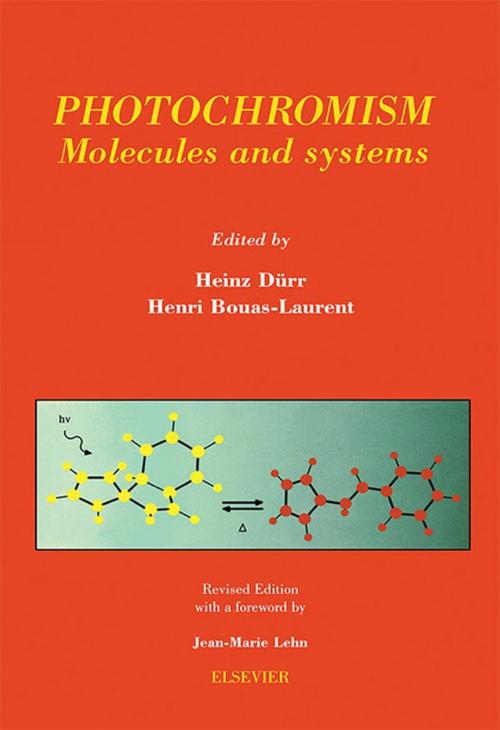Photochromism: Molecules and Systems
Nonfiction, Science & Nature, Science, Chemistry, Physical & Theoretical, Organic| Author: | ISBN: | 9780080538839 | |
| Publisher: | Elsevier Science | Publication: | March 12, 2003 |
| Imprint: | Elsevier Science | Language: | English |
| Author: | |
| ISBN: | 9780080538839 |
| Publisher: | Elsevier Science |
| Publication: | March 12, 2003 |
| Imprint: | Elsevier Science |
| Language: | English |
Photochromism is simply defined as the light induced reversible change of colour. The field has developed rapidly during the past decade as a result of attempts to improve the established materials and to discover new devices for applications.
As photochromism bridges molecular, supramolecular and solid state chemistry, as well as organic, inorganic and physical chemistry, such a treatment requires a multidisciplinary approach and a broad presentation. The first edition (1990) provided an enormous amount of new concepts and data, such as the presentation of main families based on the pericyclic reaction mechanism, the review of new families, some bimolecular photocycloadditions and some promising systems.
This new edition provides an efficient entry into this flourishing field, with the core content retained from the original work to provide a basic introduction into the different subjects.
*Second edition of a work first published in 1990, now revised due to constant development of research.
*Including updated lists of references (1989-2001), offering immediate access to recent developments.
*Providing great basic interest and high application potential bringing scientists together from chemistry, physics and engineering.
Photochromism is simply defined as the light induced reversible change of colour. The field has developed rapidly during the past decade as a result of attempts to improve the established materials and to discover new devices for applications.
As photochromism bridges molecular, supramolecular and solid state chemistry, as well as organic, inorganic and physical chemistry, such a treatment requires a multidisciplinary approach and a broad presentation. The first edition (1990) provided an enormous amount of new concepts and data, such as the presentation of main families based on the pericyclic reaction mechanism, the review of new families, some bimolecular photocycloadditions and some promising systems.
This new edition provides an efficient entry into this flourishing field, with the core content retained from the original work to provide a basic introduction into the different subjects.
*Second edition of a work first published in 1990, now revised due to constant development of research.
*Including updated lists of references (1989-2001), offering immediate access to recent developments.
*Providing great basic interest and high application potential bringing scientists together from chemistry, physics and engineering.















